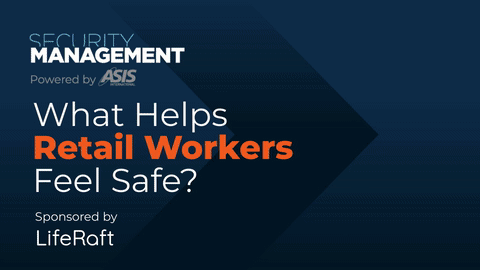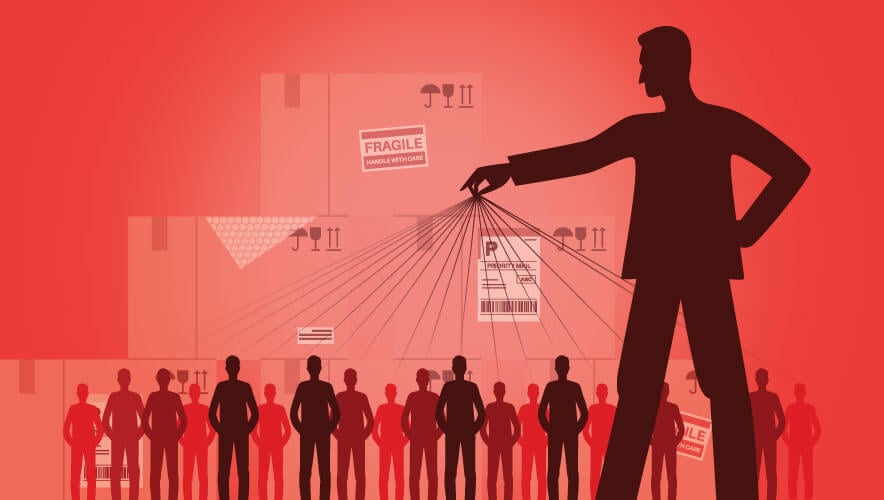3 Practical Steps to Keep Retail Employees Safe
During the past year there has been an increase in workplace violence and threats of violence within the retail sector. While businesses cannot eradicate violence entirely, there are practical steps they can take to improve employees’ preparedness in recognizing, de-escalating, and managing potentially violent situations at work. Retailers must train, support, and communicate to keep employees safe.
Ultimately, ensuring a secure work environment for employees, customers, and associates is a collective responsibility within the retail industry. The foremost strategy for minimizing the risk of customer or other external violence is through internal investments in proactive measures—training staff in safety and awareness.
Continuous Training
The training curriculum for employees should cover essential topics, such as prioritizing customer needs, de-escalation techniques, awareness of active shooter situations, preventing workplace violence, addressing domestic violence in the workplace, handling sexual harassment, non-violent crisis intervention, and ensuring preparedness for emergencies. Training should also cover crime prevention and collaboration, looking at related internal store efforts as well as exterior resources—such as other retailers, property management organizations and security, and law enforcement.
For example, de-escalation techniques include having a staff member remain calm and aware of his or her surroundings, maintaining a safe distance from a potentially violent individual, treating the customer with dignity and empathy, using a calm tone of voice, and clear communication. In a potentially violent situation, employees should rely on protocols in place in case of a hostile event—remain calm and make others aware about the situation in case they are trained to provide support or need to evacuate. This can be done by using a panic button or contacting law enforcement.
When training, remind employees that active shooter and workplace violence training involves certain elements, including evacuation, barricading, and creating distance from an aggressor. These actions are useful even in violent scenarios where there are no weapons present.
When preparing for a violent incident, support should be provided through clear communications by and between the retailer and local law enforcement on a consistent basis. Embracing know-your-role training can help members of the team identify their place and responsibilities, should the need arise, while making it easier for another person to step in to support team members. Frequent in-person training, approved by the retailer should be taken with external supporters such as law enforcement and first responders.
Identifying how your retail establishment communicates threats is just as important as how those communications are received. The use of communication platforms, outside of the training offered, should be defined by management and in conformance with internal policies. While the use of technological applications, software, and devices has become the norm for communicating within a retail environment, a single communications platform can be key to ensuring all communications are centralized.
Identifying how your retail establishment communicates threats is just as important as how those communications are received.
Situational awareness and how it relates to individual staff members is paramount in their ability to help others. Have employees be aware of their work environment and the surrounding elements—consider exits and entrances, lighting, public vs. privileged access areas, the nearest alarms, security cameras, and even the items that staff carry every day. This includes encouraging employees to use their smartphone cameras to record evidence or other technology to communicate with other employees or law enforcement about an incident.
Although remote training is possible through technological improvements, in-store and in-person training sessions offer better effectiveness, engagement, and retention.
Supporting the Workforce
Workplace violence, whether internal or external, is a risk for any business. But by engaging with employees on a personal level, organizations can foster a harmonious work environment and prevent violence in the workplace.
Supporting employees is vital to ensuring that all staff members adhere to a retailer’s policies. Providing support through assistance programs and reporting any concerning employee behavior through a clearly defined chain of command is crucial for preventing or deterring workplace incidents.
This support, combined with sharing information and training opportunities, will yield positive outcomes for workplace safety.
Employees should be aware of security measures that serve to deter potential violence, along with other benefits if an incident occurs—for example, visible security cameras and guards. Having these elements be highly visible within a worrisome area can discourage and deter potential issues. But both these deterrents also serve as additional layers of security, capable of providing real-time information to internal and public officials responding to or investigating an incident. Given the value of such tools, employees should be aware of how they can leverage these tools to support their own safety, as well as that of their coworkers and the customers.
Clear and Open Communication
Employee safety in retail is influenced by several factors, ranging from national to local pressures—and at times, effective safety also requires proactive methods, especially when security is operating on a budget.
Coordination and collaboration on a realistic level between retail management and its employees is the foundation for team cohesion. In some instances, as little as a weekly 10-minute meeting between management and retail associates can establish a safer work culture. Maintaining a sense of a team allows for uniformity and promotes an inclusive environment for new associates or members. When possible, conducting a monthly tenant meeting allows for a better flow of information and generates actionable information to the stores.
One way that retailers can collaborate on addressing common external and violent thefts and threats is by creating a community network with neighboring retailers, businesses, and other stakeholders.
Conducting a monthly tenant meeting allows for a better flow of information and generates actionable information to the stores.
It is also advisable to coordinate with nearby stores in high-traffic areas, allowing security personnel to visit and exchange information about recent events in the area and other issues that could affect a store’s security posture.
Folding in law enforcement and first responders into regular employee meetings is also recommended, as they are both part of the community that they serve and will be responding to any future incidents that may occur at the store. Having these agencies understand a retailer’s plans and protocols can reduce response times and allows for more deliberate reactions.
Establishing a consistent flow of information among retailers, employees, law enforcement, and community leaders promotes a progressively safe environment.
Balancing the reduction of violence, theft, and shrinkage while upholding customer service standards can be challenging but should remain a key element for any retailer. Retailers must continue to train their employees on various techniques to prevent, deter, and report violent acts, with sessions emphasizing situational awareness and defining roles in specific scenarios.
Matthew Stanton is general manager for GardaWorld Security U.S., where he advises, manages, and supports retail shopping centers throughout the Northeast. He has owned, operated, and managed security services for more than 15 years.













